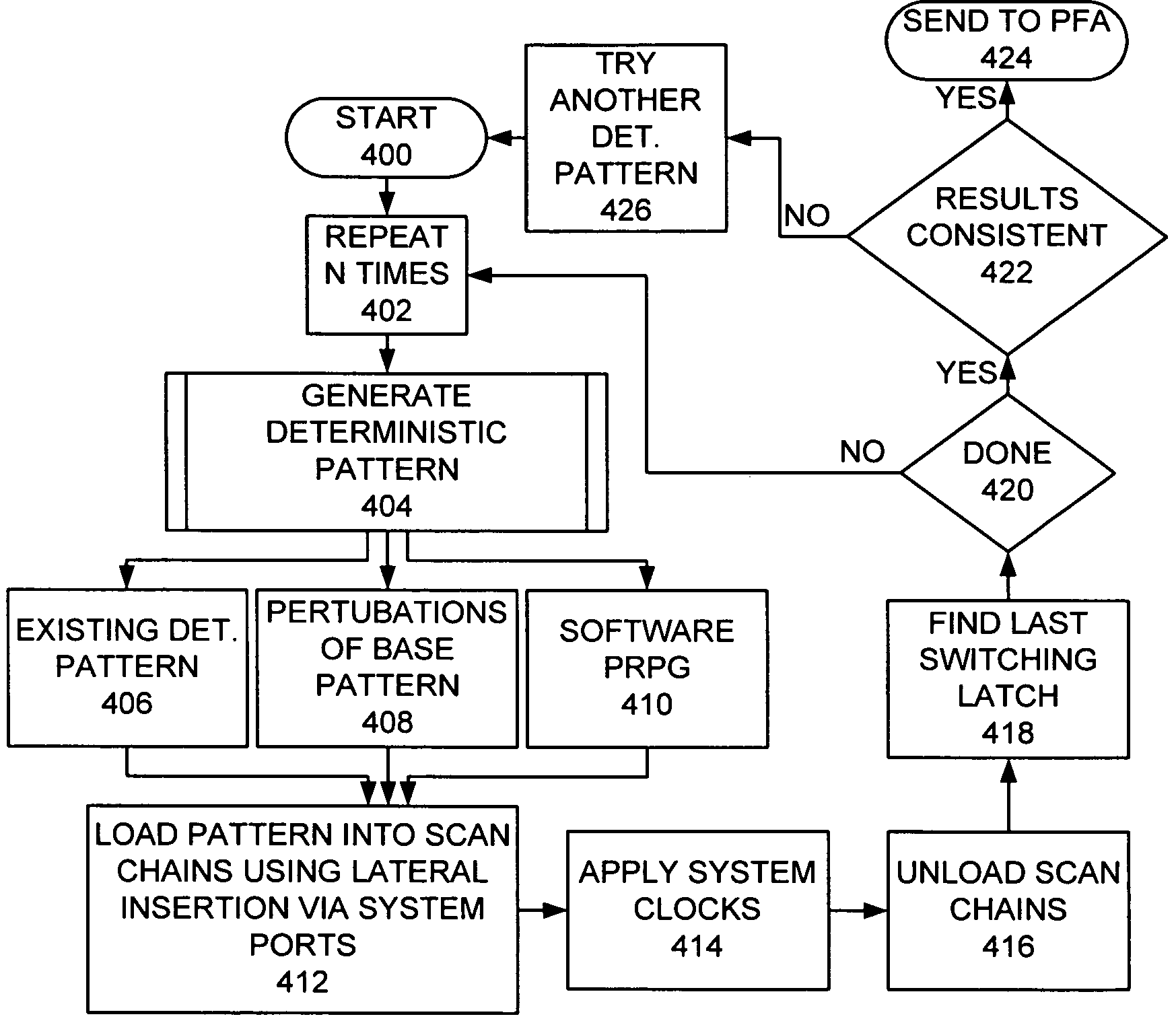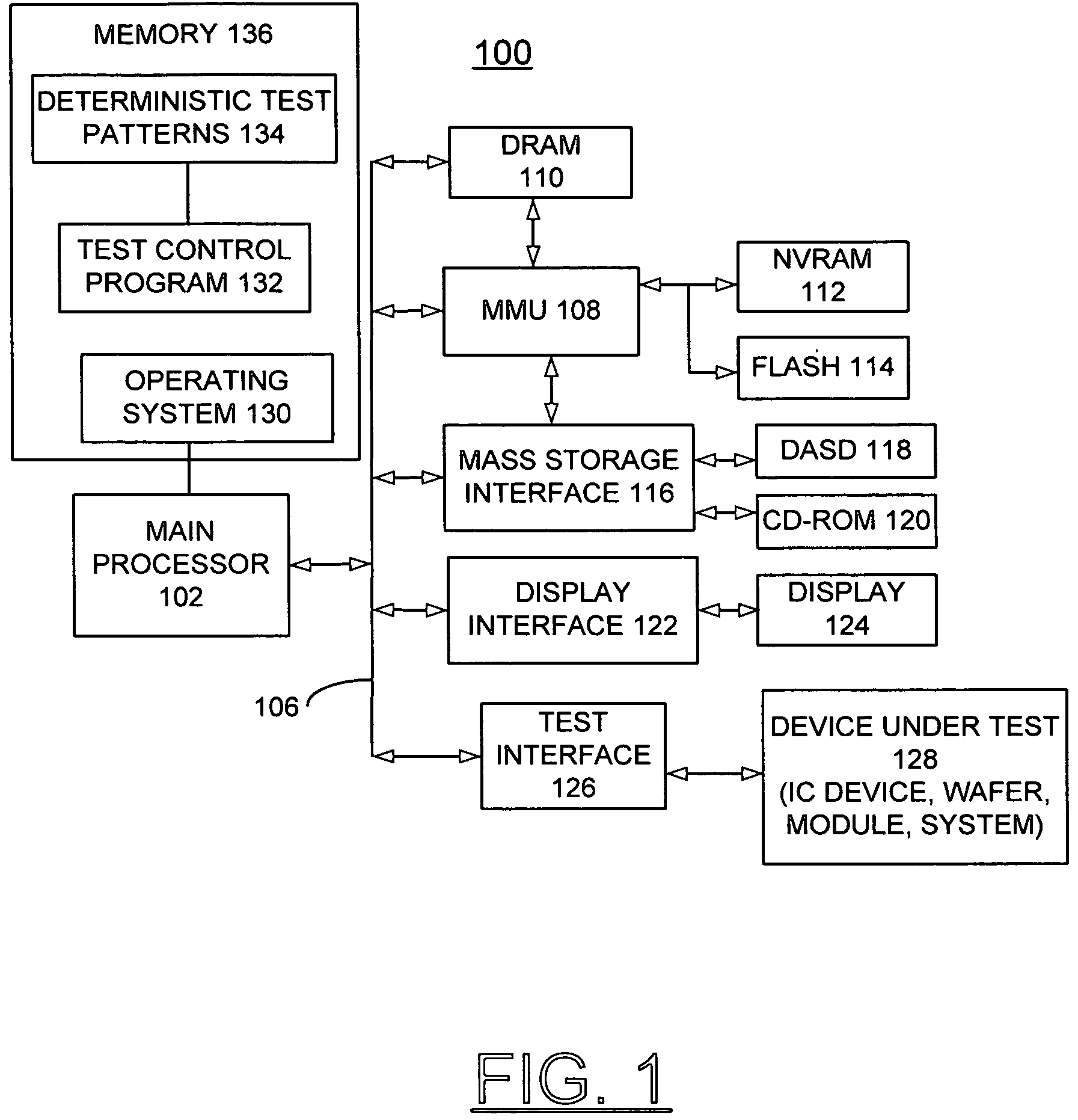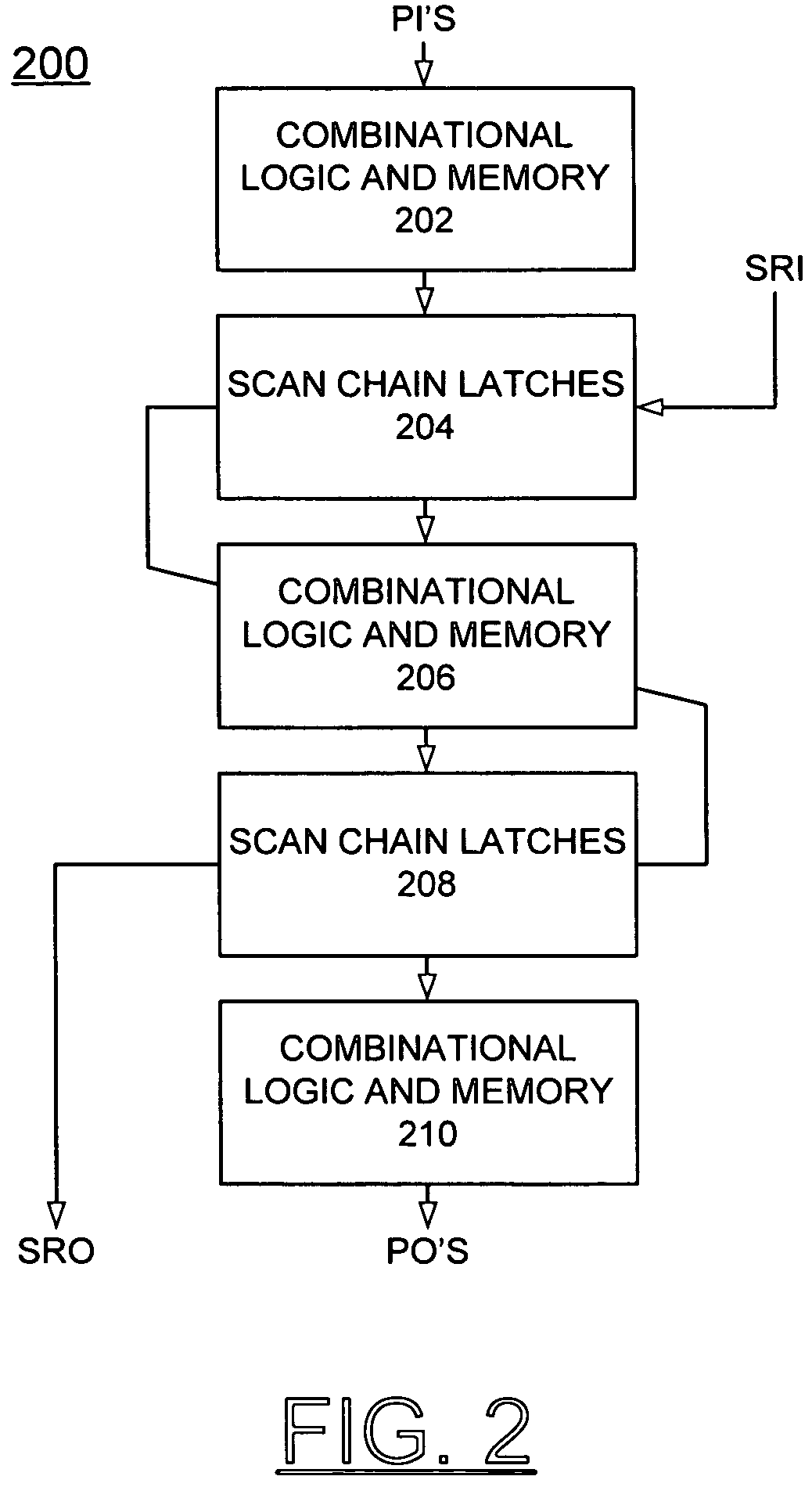Method for implementing deterministic based broken scan chain diagnostics
a technology of deterministic analysis and scan chain, applied in the field of integrated circuit testing, can solve the problems of inability to improve technology and yield, greatly affecting the program, or at least severely minimizing the revenue that could be realized, and the failure of scan chain, lssd flush and scan tests
- Summary
- Abstract
- Description
- Claims
- Application Information
AI Technical Summary
Benefits of technology
Problems solved by technology
Method used
Image
Examples
first embodiment
[0027]As indicated at a block 406, a first embodiment utilizes an existing base deterministic test pattern set (LSSD Test Mode) that is generated by an available ATPG system. The implementation is the simplest of the three cases in that the diagnostic test patterns exist and reside at the test system for effortless application to product. However, this diagnostic pattern set may not be sufficient to expose the broken latch defect. Deterministic values applied to either the scan chain inputs (SRIs) or Primary Inputs (Pis) then are used with appropriate clocking to be captured into the latches SRLs. Then the scan chain, for example, scan chain latches blocks 204, 208 are unloaded and a particular latch where the defect occurs can be determined.
second embodiment
[0028]As indicated at a block 408, a second embodiment uses perturbations of a single base deterministic test pattern from the same ATPG system. Note that there can potentially be as many base deterministic test patterns as there are unique deterministic test sequences with unique clocking present on available test manufacturing data (TMD). These perturbations can include numerous algorithms that are both very flexible, and very easy to efficiently generate. Some algorithms are as follows: no invert, all invert, Nth bit invert, rotate, invert rotate, and combinations thereof. These algorithms can be performed upon each base deterministic test pattern thereby providing an ample, sufficient, and exhaustive supply of diagnostic test patterns that are necessary to both sensitize and manifest the defect within the broken scan chain or scan chains.
[0029]Referring also to FIG. 5, for example, a base set of deterministic vectors and a perturbation matrix efficiently enables variations of th...
third embodiment
[0031]As indicated at a block 410, a third embodiment utilizing a software Pseudo Random Pattern Generator (PRPG) to generate these deterministic test patterns 134. No fault simulation is necessary due to the observation and diagnostic technique. Random data from the PRPG is applied to the scan chains as well as into the Primary inputs. These values would then be captured with appropriate clocking into the shift register latch. The scan chain would then be unloaded and resolution to where the defect occurs can be determined.
PUM
 Login to View More
Login to View More Abstract
Description
Claims
Application Information
 Login to View More
Login to View More - R&D
- Intellectual Property
- Life Sciences
- Materials
- Tech Scout
- Unparalleled Data Quality
- Higher Quality Content
- 60% Fewer Hallucinations
Browse by: Latest US Patents, China's latest patents, Technical Efficacy Thesaurus, Application Domain, Technology Topic, Popular Technical Reports.
© 2025 PatSnap. All rights reserved.Legal|Privacy policy|Modern Slavery Act Transparency Statement|Sitemap|About US| Contact US: help@patsnap.com



